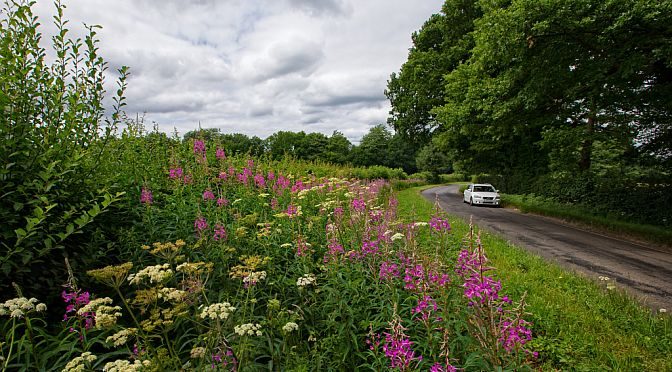Photo credit: Surrey County Council
Surrey County Council will be cutting roadside verges less frequently to promote more biodiversity.
Around 700 species of wildflower grow on roadsides, and with many native wildflowers at their colourful best in July, now is the time to enjoy yellow rattle, knapweed, cornflowers, oxeye daisies and foxgloves.
These areas are great for nature, provide a colourful boost for commuters and are helping threatened wildflowers and pollinators survive. With native plants and animals under more pressure than ever from human activity, they also provide essential corridors for wildlife of all kinds, from frogs to foxes, to travel between more permanent habitats.
Matt Furniss, Cabinet Member for Transport, Infrastructure and Economy, said, “We’re keen to ensure that we are playing our part to boost biodiversity and want to make residents aware why verges are being left alone.
“These areas are bursting with vegetation which has fantastic benefits for both Surrey’s wildflowers and wildlife. Supporting and increasing biodiversity is also a key focus of our Climate Change Delivery Plan which sets out how we will work with others to become a carbon free county by 2050.
“Highway safety remains paramount, and sightlines will be kept clear.
Any issues with vegetation impairing visibility can be reported via our website.”
Andrew Jamieson, Projects Director at Surrey Wildlife Trusts said, “It’s time to redefine our ideas about what well-managed public spaces look like. Letting roadside verges grow long isn’t laziness on the part of local authorities; it’s an essential part of our joint plan to restore and support Surrey’s plants and wildlife. Let’s not forget that over 90 per cent of the UK’s natural meadowland has been lost since the 1930s, with much of its biodiversity and ability to store carbon replaced with empty monocultures.
“It’s great that more public bodies are signing up to support nature – but everyone can help. The verges outside your house – not to mention your lawn – can be vital habitats and corridors that enable wildlife to move safely from place to place, including the pollinators we all depend on to keep our crops growing. If you simply rest your lawnmower or put away the shears for a few weeks this Summer, you are taking the first step towards a greener future for your neighbourhood.”
If you have news for Sussex and Surrey, contact us on news@susyradio.com

